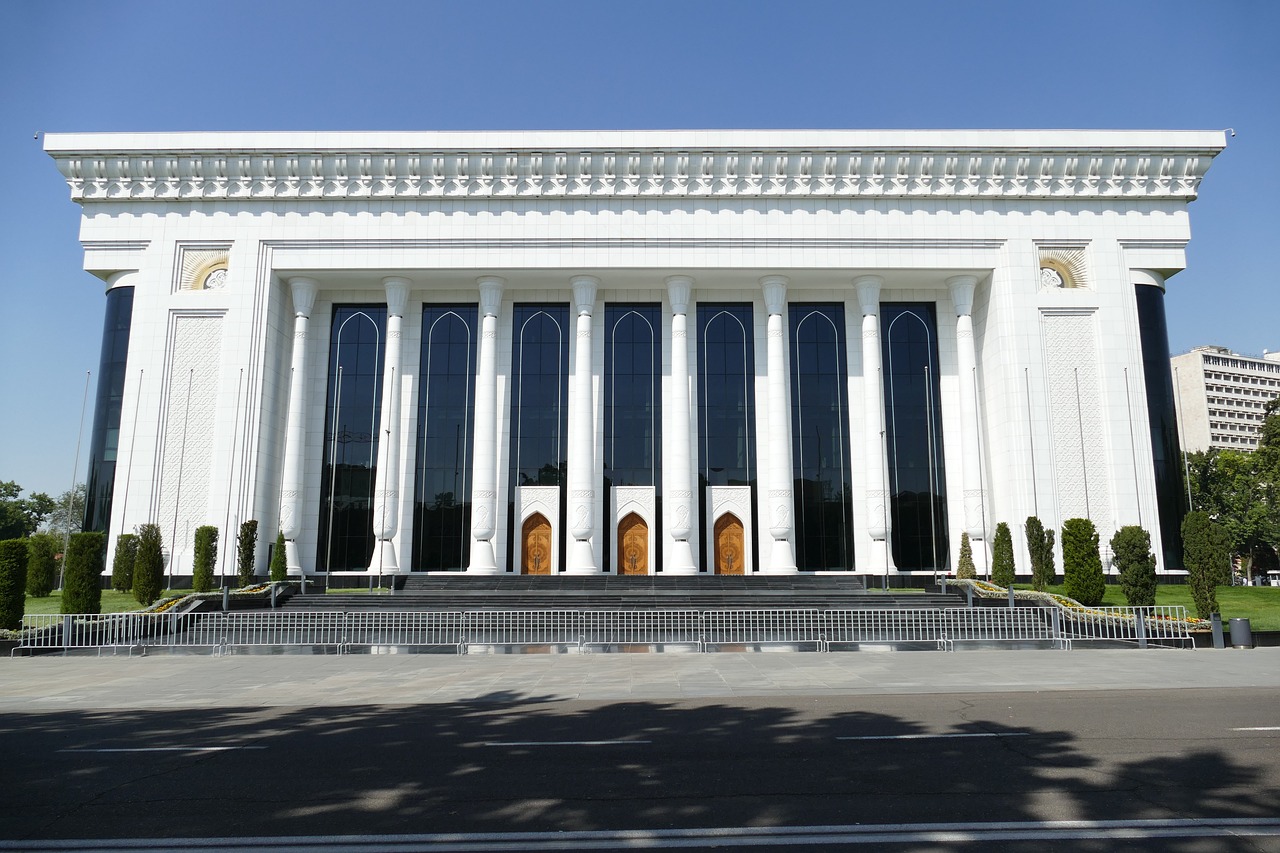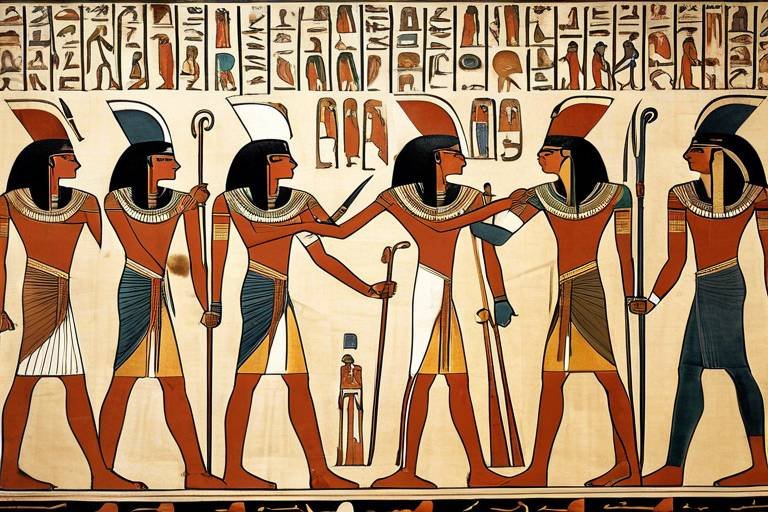The Mystery of the Ancient Silk Road's Cultural Exchange
Embark on a journey through time and space as we unravel the enigmatic allure of the ancient Silk Road's cultural exchange. This historic network of trade routes, spanning vast distances between the East and West, not only facilitated the flow of goods but also served as a conduit for the exchange of ideas, beliefs, and traditions among diverse civilizations.
Imagine caravans laden with precious silks, spices, and jewels traversing rugged terrains, connecting bustling marketplaces and remote oases. The Silk Road was more than just a trade route; it was a vibrant tapestry of cultural interactions, where merchants, scholars, and travelers from different lands converged, sparking a fusion of customs and knowledge.
At the heart of the Silk Road lay a web of key trading hubs, bustling cities like Xi'an, Samarkand, and Constantinople, where goods from distant lands mingled, and where languages, religions, and technologies intermingled. These vibrant centers became melting pots of diversity, fostering artistic and architectural exchanges that shaped the cultural landscape of the ancient world.
The Silk Road was not merely a path for commerce but a highway for the transmission of religious beliefs. Buddhism, Christianity, Islam, and other faiths found new followers as they journeyed along the trade routes, leaving a lasting imprint on the spiritual fabric of societies across Eurasia.
As caravans traversed deserts and mountains, they carried more than just goods—they transported innovations and technologies that revolutionized societies. From the cultivation of new crops to the introduction of advanced medical practices, the Silk Road was a conduit for progress and change.
One of the most intriguing aspects of the Silk Road was the encounters between settled civilizations and nomadic tribes. These interactions not only shaped trade dynamics but also influenced cultural exchange, leading to the blending of traditions and the emergence of new societal norms.
Despite its eventual decline due to shifting trade patterns and political upheavals, the legacy of the Silk Road endures. Its impact on global commerce, diplomacy, and cultural diffusion reverberates through the centuries, reminding us of the power of cross-cultural exchange and connectivity.
In the modern era, efforts to revive and preserve the legacy of the Silk Road continue. Through archaeological excavations, heritage conservation projects, and initiatives promoting cross-cultural dialogue, the spirit of the ancient Silk Road lives on, bridging past and present in a digital age of interconnectedness.

Origins of the Silk Road
The Silk Road, a legendary network of trade routes that bridged the East and the West, has a fascinating history that dates back to ancient times. The origins of the Silk Road can be traced back to the Han Dynasty in China, around the 2nd century BCE. Initially, the Silk Road began as a series of scattered routes used for trade between Chinese merchants and nomadic tribes. However, over time, these routes expanded and interconnected, forming a vast network that spanned thousands of miles.
One of the key factors that contributed to the development of the Silk Road was the demand for luxury goods such as silk, spices, and precious metals in the West. Chinese silk, in particular, was highly prized by Western civilizations for its exquisite quality and craftsmanship. As trade along the Silk Road flourished, it not only facilitated the exchange of goods but also paved the way for the transmission of ideas, technologies, and cultures between different regions.
The Silk Road was not just a trade route; it was a melting pot of diverse cultures and civilizations. Merchants, scholars, and travelers from China, India, Persia, and the Mediterranean region converged at key trading hubs such as Xi'an, Samarkand, and Constantinople, creating a vibrant exchange of knowledge and traditions. This cultural exchange along the Silk Road laid the foundation for the fusion of artistic styles, architectural techniques, and religious beliefs that shaped the societies of Eurasia.
Moreover, the Silk Road played a crucial role in connecting the East and the West in ways that were previously unimaginable. The interactions between different civilizations fostered a spirit of curiosity and exploration, leading to the exchange of innovations in agriculture, medicine, and technology. The transfer of knowledge along the Silk Road not only enriched the societies that participated in trade but also had a lasting impact on the course of human history.
In essence, the origins of the Silk Road can be traced back to a time of great exploration and discovery, where merchants and travelers embarked on perilous journeys across vast landscapes in search of new horizons. The legacy of the Silk Road continues to inspire us today, reminding us of the power of cultural exchange and the importance of bridging divides to create a more interconnected world.

Key Trading Hubs
The Silk Road was a bustling network of trade routes that connected the East and West, fostering the exchange of goods, ideas, and cultures. Among the key trading hubs that played a pivotal role in this intricate web of commerce were cities like Xian, Samarkand, and Baghdad. These vibrant urban centers served as melting pots where merchants from different lands converged to barter their wares and engage in cultural exchanges.
One of the most renowned trading hubs along the Silk Road was Samarkand, located in present-day Uzbekistan. This ancient city was a crossroads of civilizations, where silk from China, spices from India, and precious metals from Persia were traded. The architectural marvels of Samarkand, such as the Registan Square and the Bibi-Khanym Mosque, stand as testaments to its rich history as a hub of commerce and culture.
Xian, another significant trading hub, served as the eastern terminus of the Silk Road in China. Merchants traveling along the route brought not only silk and tea but also innovations like papermaking and gunpowder. The bustling markets of Xian bustled with activity as goods from the East and West changed hands, fueling economic prosperity and intellectual exchange.
Further west, Baghdad emerged as a vital hub of trade and scholarship during the Islamic Golden Age. The city's strategic location along the Silk Road facilitated the exchange of goods, knowledge, and ideas between the Abbasid Caliphate and distant lands. Baghdad's markets teemed with spices, textiles, and rare commodities, attracting traders from far and wide.
These key trading hubs were not merely centers of commercial activity but also vibrant crossroads of culture and intellectual exchange. The bustling bazaars, caravanserais, and cultural institutions that flourished in cities like Xian, Samarkand, and Baghdad epitomized the spirit of interconnectedness and mutual enrichment that defined the ancient Silk Road.

Artistic and Architectural Influence
The Silk Road was not merely a pathway for the exchange of goods; it was a vibrant conduit for the dissemination of artistic and architectural influences across vast distances. Imagine intricate patterns of silk intertwining with delicate brushstrokes of calligraphy, creating a visual symphony that transcended cultural boundaries. The artisans and architects along the Silk Road were like alchemists, blending elements from diverse civilizations to craft a new aesthetic language that spoke to the shared human experience.
One of the most remarkable aspects of the Silk Road's artistic exchange was the fusion of styles and techniques from East and West. Buddhist cave temples in Dunhuang, China, adorned with vibrant murals depicting celestial beings, coexisted with the grandeur of Roman-inspired architecture in Palmyra, Syria. These cross-cultural encounters gave rise to a rich tapestry of artistic expression, where motifs from Persia, India, Greece, and beyond mingled to create a visual feast for the senses.
The architectural legacy of the Silk Road is equally awe-inspiring, with monumental structures like the Great Mosque of Samarra in Iraq showcasing intricate geometric patterns and towering minarets that reflected the cosmopolitan nature of the trade routes. Caravanserais, or roadside inns, provided not only shelter for weary travelers but also served as centers of cultural exchange, where merchants, scholars, and artisans gathered to share stories, ideas, and innovations.
The Silk Road was a melting pot of artistic and architectural influences, where each civilization contributed a thread to the intricate tapestry of human creativity. From the graceful curves of Chinese pagodas to the ornate mosaics of Byzantine churches, the legacy of the Silk Road endures as a testament to the power of cultural exchange to transcend boundaries and inspire generations to come.

Religious Crossroads
When exploring the historical significance of the ancient Silk Road, one cannot overlook its role as a . The Silk Road was not only a conduit for the exchange of goods but also a pathway for the transmission of religious beliefs and practices. As merchants and travelers journeyed along the trade routes, they carried with them not only material goods but also spiritual ideas that would shape the religious landscape of Eurasia.
One of the most significant religions that spread along the Silk Road was Buddhism. Originating in India, Buddhism found its way to Central Asia and beyond, reaching as far as China and Japan. The Silk Road facilitated the dissemination of Buddhist teachings, art, and scriptures, leading to the establishment of monasteries and pilgrimage sites along the trade routes.
Similarly, Christianity also made its way eastward along the Silk Road, entering regions such as Persia and Central Asia. The exchange of goods and ideas enabled Christian missionaries to spread the message of Jesus Christ to diverse populations, contributing to the growth of Christian communities in regions previously untouched by the faith.
Moreover, Islam found fertile ground for expansion along the Silk Road, particularly in Central Asia and the Middle East. The trade networks facilitated the movement of Muslim traders and scholars, leading to the establishment of mosques, madrasas, and cultural centers that served as hubs of Islamic learning and dissemination of religious knowledge.
As these religions intersected and interacted along the Silk Road, a syncretic blend of beliefs and practices emerged, creating a rich tapestry of religious diversity. The cross-cultural exchanges that took place fostered dialogue, mutual understanding, and the enrichment of spiritual traditions, shaping the religious landscape of Eurasia for centuries to come.

Innovations and Technologies
When we delve into the realm of along the ancient Silk Road, we uncover a treasure trove of advancements that reshaped societies and propelled civilizations forward. The exchange of knowledge and ideas along these trade routes sparked a wave of progress in various fields, from agriculture to medicine to engineering.
Imagine the transformative power of agricultural innovations traversing vast distances, introducing new crops and cultivation techniques to different lands. The Silk Road acted as a conduit for the transfer of agricultural knowledge, leading to increased yields, improved farming practices, and the cultivation of previously untapped resources.
Furthermore, the realm of medicine witnessed groundbreaking developments as healers and scholars shared their expertise across borders. Herbal remedies, surgical techniques, and diagnostic methods spread along the Silk Road, enhancing healthcare practices and saving countless lives.
Engineering marvels also flourished along these ancient trade routes, with the exchange of architectural designs, construction techniques, and infrastructure projects shaping the urban landscapes of diverse civilizations. The Silk Road facilitated the transmission of engineering knowledge, resulting in the construction of monumental structures, innovative irrigation systems, and efficient transportation networks.
Through the lens of , the Silk Road emerges as not just a path of commerce, but a conduit for progress and ingenuity that transcended geographical boundaries and cultural differences. The legacy of these advancements continues to resonate in the modern world, reminding us of the enduring impact of cross-cultural exchange and collaboration.

Encounters with Nomadic Tribes
When traveling along the ancient Silk Road, encounters with nomadic tribes were not just meetings of convenience but pivotal moments of cultural exchange and interaction. These nomadic tribes, known for their mobile lifestyle and mastery of vast terrains, played a significant role in shaping the dynamics of trade and communication along the Silk Road.
Imagine the bustling markets of Samarkand or the dusty caravan routes winding through the steppes, where merchants from settled civilizations would cross paths with nomadic tribes such as the Scythians, Mongols, or Xiongnu. These encounters were more than just transactions; they were opportunities for the exchange of goods, ideas, and traditions.
One of the most fascinating aspects of these interactions was the blending of different lifestyles and worldviews. The nomadic tribes brought their knowledge of horsemanship, archery, and survival in harsh environments, while the settled civilizations offered goods like silk, spices, and precious metals. This cultural fusion led to the development of new technologies, artistic styles, and social practices that enriched both sides.
Moreover, the nomadic tribes were not merely passive participants in this exchange; they often acted as intermediaries, facilitating trade between distant regions and serving as guides through the challenging landscapes of Central Asia. Their expertise in navigation and survival skills made them indispensable partners for merchants seeking to traverse the vast expanses of the Silk Road.
However, these encounters were not always peaceful. Conflicts over resources, territorial disputes, and clashes of interest occasionally arose between settled civilizations and nomadic tribes. Yet, even in times of tension, there was a recognition of the mutual benefits of cooperation and trade, leading to the establishment of diplomatic relations and cultural alliances.
Overall, the interactions between settled civilizations and nomadic tribes along the Silk Road were a testament to the power of cultural exchange and the resilience of human connections across diverse landscapes. These encounters shaped the development of trade networks, the spread of ideas, and the evolution of societies, leaving a lasting impact on the historical legacy of the Silk Road.

Decline and Legacy
As the ancient world evolved and new trade routes emerged, the once bustling Silk Road began to decline. Various factors contributed to its gradual fade into obscurity, from the rise of maritime trade routes to the fall of powerful empires that had once sustained its prosperity. The Silk Road's legacy, however, continued to resonate across time and space, leaving an indelible mark on the history of global commerce and cultural exchange.

Modern Revival and Preservation Efforts
In the digital age, efforts to revive and preserve the legacy of the ancient Silk Road have gained momentum, with initiatives spanning archaeological excavations, heritage conservation projects, and cross-cultural dialogue programs. Archaeologists and historians are delving into the remnants of ancient trading posts and caravan routes, unearthing artifacts that shed light on the vibrant exchange of goods and ideas that once took place along the Silk Road.
Heritage conservation projects aim to safeguard the architectural wonders and cultural sites that dot the historic trade route. From the majestic ruins of ancient cities to the intricate carvings on cave temples, preservationists are working tirelessly to protect these treasures from the ravages of time and modern development.
Furthermore, contemporary initiatives seek to promote cross-cultural dialogue and understanding by organizing exhibitions, symposiums, and educational programs that highlight the shared heritage of the Silk Road civilizations. By fostering mutual respect and appreciation for diverse cultures, these efforts aim to reignite the spirit of exchange and cooperation that defined the ancient Silk Road.
Through digital platforms and virtual tours, modern technology is being harnessed to bring the wonders of the Silk Road to a global audience. Interactive websites, virtual reality experiences, and online repositories of historical materials allow people from all corners of the world to explore the rich tapestry of cultures and traditions that once thrived along the ancient trade routes.
As we embark on this journey of rediscovery and preservation, we are not merely uncovering relics of the past but also rekindling the flame of cultural exchange and interconnectedness that characterized the Silk Road. By honoring the legacy of this historic network, we pave the way for a future where diverse civilizations can once again come together in a spirit of mutual respect and cooperation.
Frequently Asked Questions
- What is the significance of the Silk Road in history?
The Silk Road played a crucial role in connecting civilizations across Asia, Europe, and Africa, facilitating the exchange of goods, ideas, and cultures. It contributed to the spread of technologies, religions, and artistic styles, shaping the development of societies along its routes.
- Which cities were key trading hubs along the Silk Road?
Cities such as Xi'an, Samarkand, and Constantinople were prominent trading hubs along the Silk Road where merchants from different regions converged to exchange goods and engage in cultural interactions. These cities became melting pots of diverse traditions and influences.
- How did the Silk Road influence artistic and architectural styles?
The Silk Road facilitated the spread of artistic techniques, architectural designs, and cultural motifs across different regions. This led to the fusion of artistic styles, the emergence of unique hybrid forms, and the enrichment of cultural expressions through cross-cultural interactions.
- What led to the decline of the Silk Road?
Various factors contributed to the decline of the Silk Road, including the shift in trade routes due to maritime exploration, political unrest, and the rise of new empires. These changes led to the gradual fading of the Silk Road as a primary trade network.
- How is the legacy of the Silk Road preserved today?
The legacy of the Silk Road is preserved through archaeological excavations, heritage conservation projects, and initiatives that promote cross-cultural dialogue and understanding. Efforts are made to safeguard the historical significance of the Silk Road and its impact on global commerce and cultural exchange.



















